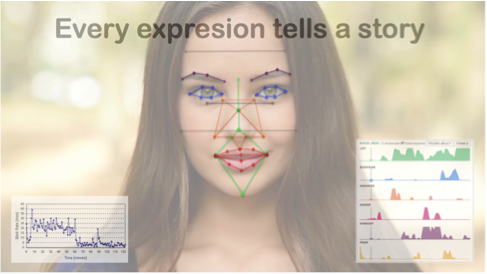Honesty Score – Hints
The ETC Honesty Score – Test is a compilation of elements that we call “Checkpoints” that récord the body and verbal reactions of a person when is interrogated and through a detailed observation can be detected if they lie.
www.etc-ai.com

Honesty – Hints & Checkpoints
ETC Honesty Score – Test is the combination of science, technology, and personal observation to figure out who is lying!
Based on microexpressions, blink and attention rates, signs, clues, reactions, indexes. Critical success factors to identify patterns in the interview (video). The unique combination of science and the art of observation with intuition generates excellent results. (ChP – Checkpoint).
The primary evaluation process are sessions with the potential Candidate. It is critical to establish rapport and a relaxed atmosphere in the first part of the interview to record Emotions, Blink & Attention rates, used as a baseline/ benchmark.
To fine tune a proper evaluation for each Question, you need to study and sometimes check the Video Interview and use facts, hard data, and your Intuition to generate a Lying Score and conclusions.
The Honesty Score is not infallible and therefore is a relative value to determine whether the person tells the truth or not based on a scale.
ETC = Honesty Score

Set of Points to Evaluate
It is essential to establish a Behavioral Baseline to evaluate Checkpoints properly:
> Try to build a Calm and Rational conversation
So the person can concentrate on what you are trying to say without feeling attacked. Is a discussion not a confrontation. You are not competing; you are trying to know the truth.
> Approach the potential Lyier with specific Questions
The Incident video session of the conversation for analysis. Questions are prepared in advance and segmented by the type of Job.
> Talk to the person in private
Do it in public can be very harsh and embarrass for the lier and will become defense!
> Document instances of Lying
Keep a record of situations and details to reach better conclusions.
Face & Eyes Expressions
Face & Eyes Expressions
1. Conflicting “Emotions” suggest Lying
Microexpressions flash on a person ́s face for a fraction of a second and show us real emotions.
Visual Lying Detector video recognition technology, record, and check every 4/100 ́s of a second, micro expressions and extract emotions (6) at the Question Level.
People telling the truth aligned their thoughts and emotions — individuals lying express distress in their micro-expressions such as Anger, Disgust & Fear.
ETC Method: Evaluate the “Emotions Chart” in the Interpretation module at the Question level to find deception signs.
Emotion Expressions Chart (ChP)
2. Blinking & Attention Rates is a sign of Lying
Normal blink rate: between 6 to 8 times per minute and eyes remain closed each time for one 40th of a second. (one 40th of a second)
When you lie you use more energy because your brain is creating the new reality – High Blink rate is a common sign of lying.
They blink less than average during the lie period and then have a flurry up to eight times faster than usual afterward.
Key Performance Indicator: Compare Blink Rate in “Soft versus Hard Questions”
Blinking – Sign of Lying (ChP)
Attention rate: Eyes and head movements detect Deception
Avoid looking at you in the Eyes – Not Interested in what is said.
Trained liers know it and will look directly into your eyes.
The reason for No-Eye contact is because they are hiding something.
3. Eyes Movements detects Deception.
Eyes Direction for Right handed people (ChP)
When you tell the truth, you use your memory (right)
When you lie you use your imagination (left – UP)

Closing your eyes more than a second when lying (ChP)
Verbal Responses
Verbal Responses
4. Person Voice and talking
Compare the voice normal tone and power to:
Talking Speed – Normal (ChP)
Talk Faster or slower than average speed.
Voice Force (ChP)
Tension by lying may result in a higher power.
Higher-Pitched or Quavering Tone (ChP)
Above the normal voice range, tone, and pitch.
Impulsive Emotional Responses “IER” (ChP)
Recognizing the time and duration of response tends to be off.
Delivered aimed not to respond a question (ChP)
Technically telling the truth, but avoiding answering the question.
5. Verbal Responses (Timing, Duration, Emotions)
Exaggerated Details (ChP)
Provide too much information and details, telling too much!
Pay close attention to reactions/answers to questions (ChP)
A person telling the truth doesn´t feel the need to defend.
Stalling Tactics – Asking for a question to be repeated.
Using “Basically or What happened was….”
Confrontational style such as “It depends on what you mean….”
Using “to be honest”, “frankly”, “to be truthful”
Complements from the subject in question.
Invoking Religion – I swear to god. I didn´t
Selective Memory – Not that I recall
Ask backward – “Reverse Order Narrative” – Coherence (ChP)
Ask to tell the story in forwarding and backward chronological order.
Person repeats sentences (ChP)
Not ready to reveal much else and keeps repeating.
Mid-sentence jumps and subtle delay to responses (ChP)
Stop in the middle of a sentence, restart and fail to finish.
Not Using “I” and avoid Contractions (ChP)
Use “did not” instead of “didn´t”
Use of Humor and/or Sarcasm to distract (ChP)
A common practice to avoid the subject

Body Language
Body Language Cues
6. Body Language (Face & Head Checkpoints)
Nose Touching (ChP)
Be careful of a “normal” itch that is satisfied with rubbing.
Mouth Covering / Fingers in the Mouth (ChP)
An intuitive gesture that appears in the Mouth.
Eye Rub (ChP)
Is a natural attempt to block your words.
Neck Scratch (ChP)
The person is saying “I am not sure I agree.”
Change Head position quickly (ChP)
A mismatch between body language and what is said.
Watch Person Throat “Close up” – (ChP)
Difficult by swallowing saliva and clearing their throat.
Lips Licking (ChP)
A clear sign of insecure gestures.

7. Body Language (Reactions)
Sweating – a good indication of Lying (ChP)
Impossible to control along with trembling, blushing.
Person Nods – Incongruence (ChP)
Head is nodding or shaking in opposition to what is being said.
It´s important so please observe the Person Throat again! (ChP)
Difficult by swallowing saliva and clearing their throat.
Fast Breathing (ChP)
Short breaths followed by one deep breath – Dry Mouth.
They tend to point a lot (ChP)
A clear sign of the desire to take the focus off the individual.
Change head position quickly (ChP)
The mismatch between body language and what is said.
Sudden Coughing (ChP)
Start Coughing in a critical moment.
8. Body Language (Positioning & Movements)
They Stand very Still (ChP)
Trying to demonstrate security, you usually are relaxed.
Fidgeting a result of nervous energy (ChP)
With their own body or random objects.
Breaking Mirroring as a sign of rapport (ChP)
Tend to lean backward a sign of breaking the conversation.
Instinctively cover vulnerable body parts (ChP)
Throat, neck, head or abdomen. Shrink in on them.
Lowering or hiding the Thumbs (ChP)
A natural and clear sign of lying.
Legs & Hands (ChP)
Palms open, equal to truth, legs, and hands tight means deception.
Professional Interrogation Techniques
Professional Interrogation Techniques
9. Interrogation Process
Be Careful – You can Misread Deception (ChP)
A stressed person can be mistaken for a liar.
Track Person overall Stress (ChP)
It takes a lot of negative physical/mental energy to maintain a lie.
Repeat the Story (ChP)
Ask to repeat the story multiple times and discover variations.
Use Silence to evaluate signs (ChP)
It´s hard for a liar to avoid filling the silence.
Avoid aggressive interrogation (ChP)
Applying physical & emotional discomfort could create Anxiety.
Never use: Did you…, I know that you…, Why are you lying to me.

10. Evaluate the Person Trends & Patterns and Act!
History of Lying (ChP)
Learning to lie is a natural process in child development and will be improved with age.
Lying Patterns (ChP)
Lies come in all shapes and sizes. Evaluate falsehood effects.
People that believe their own lies (ChP)
Is there a History and Motive to Lie? – Pathological Liers.
Do you consider the person a Master Lier? (ChP)
After training, people can be very efficient at Lying.
A Master Lier use a lot of brainpower to manage contradictory information in mind (Truth & Lie) and can perfect skills.
Show your evidence and wait for the reaction! (ChP)
If lying continues, it is time to bring the evidence.
Explain that there is a Trust issue! (ChP)
You have to tell the person that you don´t believe anymore.








